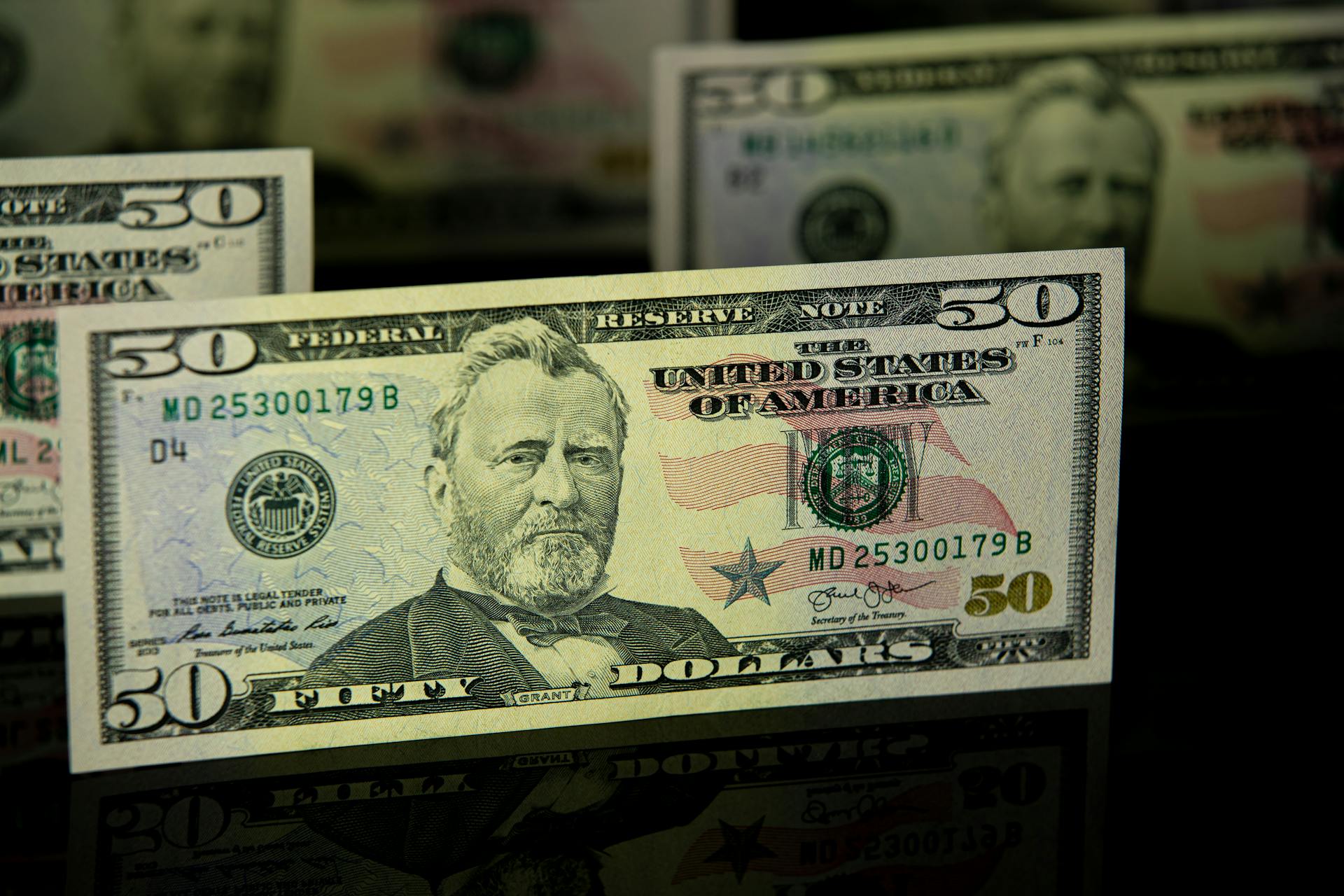
If you're a motorcycle enthusiast, you know how thrilling it is to hit the open road on two wheels. The freedom and rush of adrenaline are unbeatable, but owning a motorcycle also comes with significant responsibilities.
In the United States, motorcycle insurance is mandatory in most states, with penalties for non-compliance. According to the National Highway Traffic Safety Administration, motorcycle fatalities account for 14% of all traffic fatalities, making insurance a crucial aspect of motorcyclists' safety.
Most motorcycle insurance policies cover damages to the bike, medical expenses, and liability for injuries or damages to others. The cost of insurance varies widely depending on factors like age, experience, and type of bike.
Consider reading: What States Require Motorcycle Insurance
Insurance Options and Add-Ons
Insurance options for motorcycle riders can be overwhelming, but understanding the basics can help you make informed decisions. Most states require liability insurance to ride on the road.
Liability insurance pays for damage you do to others' property or injuries, and it's a must-have for any rider. Collision insurance, on the other hand, covers damages to your motorcycle in case of an accident. Comprehensive coverage pays for non-collision-related damages, like theft or vandalism.
Some insurance policies also cover riding gear, such as jackets and helmets, as well as accessories like trailers, sidecars, or upgraded parts. Roadside assistance is another valuable add-on that can help you in case of a flat tire or dead battery. Here are some common motorcycle insurance coverage options:
It's essential to check your policy to confirm coverage for customizations and accessories, as well as for rental bikes.
Collision
Collision coverage is the insurance you want to protect your bike if you collide with another object.
If your bike is not repairable, your insurance company will determine the value of your vehicle and pay you the determined value of your bike, minus any deductible.
You don't need collision coverage on an older bike if it's not worth the cost, since the coverage is usually limited to the cash value of your motorcycle.
If you're still financing your motorcycle, you'll be required by your bank to continue to protect their investment with collision and comprehensive coverages.
Dropping collision coverage means you're responsible for the full cost of repairs or replacement, so balance the option of lower motorcycle insurance premiums with your ability to pay out-of-pocket for uncovered expenses.
Broaden your view: Agreed Value Motorcycle Insurance
Comprehensive
Comprehensive coverage is a must-have for motorcycle owners who want to protect their bike from non-collision related incidents. It covers losses due to fire, theft, or vandalism.
This type of coverage varies by state and policy language, so it's essential to check your policy details. Comprehensive coverage may also include other risks, such as damage from extreme weather conditions.
If your bike is stolen, comprehensive coverage may be the only thing standing between you and a financial loss. Comprehensive coverage may protect you if your bike is stolen, which is another good reason to select that option with your insurance purchase.
You should know that comprehensive coverage is not a one-size-fits-all solution. The specific risks covered and the level of protection vary depending on your policy and state laws.
Broaden your view: Wa Motorcycle Insurance Requirements
Trip Interruption Options
Trip Interruption Options can mean the difference between having and not having a good time on a long ride.
Rides can last thousands of miles, and things don't always go as planned. Mechanical breakdowns and losses due to Comprehensive or Collision coverage can happen anywhere.
In the event of a mechanical breakdown or a covered Comprehensive or Collision coverage loss, trip interruption insurance will kick in once you're outside of a 100-mile radius from home.
This insurance will help pay for lodging, transportation, and food while you wait for your motorcycle to be repaired or replaced.
Uninsured/Underinsured Motorist (UM/UIM)
Uninsured/Underinsured Motorist (UM/UIM) coverage is a must-have in case you're involved in an accident with someone who doesn't have insurance or doesn't have enough insurance protection.
This type of coverage can cover medical treatment, lost wages, and sometimes even property damage.
In some states, these types of coverages can be purchased separately from each other, so it's essential to check your state's laws and regulations.
Having UM/UIM coverage can provide financial protection and peace of mind, especially if you're involved in an accident with someone who doesn't have adequate insurance.
Check this out: Does Auto Insurance Cover Break Ins
Add-On Options
Add-On Options can be a game-changer for motorcycle riders. You can customize your policy to fit your needs and preferences.
Liability insurance is a must-have, but you can also add collision insurance to cover damages to your bike in case of an accident. Comprehensive coverage will protect you from non-collision-related damages like theft or vandalism.
Some insurance policies will cover riding gear like jackets and helmets, as well as accessories like trailers, sidecars, or upgraded parts. This is especially important if you've made significant customizations to your bike.
Underinsured or uninsured motorist coverage can reimburse you if an underinsured or uninsured driver damages your bike or injures you. This is a crucial add-on to consider.
Here are some specialty coverages to consider:
- Accessories coverage: This covers special accessories on your bike, such as custom paint or chrome wheel rims.
- Helmet coverage: This will help you pay to repair or replace your helmet after an accident.
- Roadside assistance: This can come to the rescue if you run into a problem on the road, such as a flat tire or dead battery.
Keep in mind that some states don't require coverage for custom parts, equipment, and accessories, but lenders might. It's a good idea to check your policy to see what's included.
Bundling Policies
Bundling policies can be a great way to save money on your insurance premiums. Policygenius states that policyholders can save up to 20% by bundling their car and motorcycle policy.
Buying multiple policies from the same company can be cheaper than buying them separately from different companies. This is because of the multi-policy discount.
Some insurance companies offer discounts for bundling policies with other products like home or renters insurance. This can be a convenient option for people who already have these types of policies with the same company.
Worth a look: Southern Company Stock Quote
Discounts Available
National General Insurance offers a range of discounts, including touring-bike discounts, safe-rider discounts, and multi-cycle discounts.
You can save money on motorcycle insurance by shopping around and comparing quotes from different insurance companies. Pay attention to the discounts each company offers, as they can vary significantly.
Taking a safety course can also earn you a discount with many insurance companies. This is a great opportunity to improve your riding skills and reduce your premiums.
If you have multiple insurance policies with the same company, such as auto and home insurance, you may be eligible for a multi-policy discount.
Here's an interesting read: Toro Company Investor Relations
Some insurance companies offer discounts for riders who install anti-theft devices on their bikes. Completing a motorcycle safety course can also qualify you for a discount.
You can also save money on motorcycle insurance by paying your premium in a single payment, rather than in installments.
Here are some common discounts available for motorcycle insurance:
- Touring-bike discounts
- Safe-rider discounts
- Multi-cycle discounts
- Anti-theft device discounts
- Safety course discounts
- Multi-policy discounts
- Organization member discounts
- Mature rider discounts
- Lay-up policy savings
Remember to ask your insurance company about any other discounts they may offer, as they can vary depending on your specific situation.
Factors Affecting Insurance Cost
Your age, driving record, and where you live are major factors in determining motorcycle insurance rates.
The type or style of bike you ride also plays a significant role, with sport bikes, cruisers, and custom motorcycles falling into different categories.
Your driving record is crucial, with a clean record resulting in lower premiums.
Having a DUI or at-fault accident on your record can increase your premiums significantly.
The table below shows how different driving records affect insurance costs:
Your location and riding habits also influence your insurance rates, with urban areas typically having higher rates due to increased crime and theft.
See what others are reading: Vermont Mortgage Rates
Factors Influencing Rates
Your age, driving record, and where you live are all significant factors that influence your motorcycle insurance rates. This is because insurers consider you a higher risk if you're young or have a history of accidents or speeding tickets.
The type of bike you ride also plays a role in determining your insurance costs. For example, sport bikes are often more expensive to insure than cruisers or custom motorcycles.
The age of your motorcycle is another factor that affects your insurance rates. Generally, older bikes are cheaper to insure than newer ones.
The number of miles you ride per year can also impact your insurance costs. If you ride a lot, you'll likely pay more for insurance than someone who only rides occasionally.
Where you store your bike can also affect your insurance rates. If you live in an area with high crime rates or where bikes are more likely to be stolen, you may pay more for insurance.
Here's a breakdown of how different factors can impact your insurance rates:
- Clean driving record: $1,779 per year for full coverage
- At-fault accident: $2,743 per year for full coverage
- DUI: $2,885 per year for full coverage
- Speeding ticket: $2,476 per year for full coverage
Seasonal Riding
Seasonal Riding can be a cost-effective option for riders who only use their vehicles during certain times of the year.
If you plan to reduce your coverage during the off-season, make sure to read your policy carefully to understand what's covered and what's not.
Even one ride during the off-season could put you at risk of damages that aren't covered, so be aware of the risks involved.
Suggestion: Open Season Bcbs
Insurance Costs and Comparison
The cost of motorcycle insurance varies significantly depending on where you live. In fact, the average cost of motorcycle insurance by state ranges from $75 in Georgia to $305 in New York, according to Insurify.
Some states are more expensive than others for motorcycle insurance coverage. For example, Louisiana has the highest average cost at $287 per month, while California has the lowest at $92 per month.
The type of motorcycle you have can influence how much you pay for coverage, but not by much. The average cost of motorcycle insurance for drivers of standard, sports, and touring bikes is around $68 for minimum coverage and $148 for full coverage.
If this caught your attention, see: How Much Does Amazon Flex Pay per Block
If you have a clean driving record, have completed safety courses, and take good care of your bike, you will likely be eligible for discounts on your premium. This can lead to significant savings on your motorcycle insurance policy.
To get the best motorcycle insurance rates, consider the following factors: higher deductibles and lower coverage limits mean lower insurance premiums, safer bikes mean lower insurance rates, and a safe riding history means lower premiums.
Here are some average costs of motorcycle insurance by state:
Remember to shop around and compare quotes from several motorcycle insurers to find the best rates on the coverage you need.
Getting and Managing Insurance
Getting the right motorcycle insurance policy can be a bit overwhelming, but it's essential to have peace of mind on the road. To get the best motorcycle insurance rates possible, consider higher deductibles and lower coverage limits, which can mean lower premiums, but also more out-of-pocket dollars at risk.
A unique perspective: How to Lower Motorcycle Insurance
A safe bike is another key factor in getting lower insurance rates. Safer bikes mean lower insurance rates, so make sure to choose a bike that's designed with safety in mind. Additionally, a safe riding history means lower premiums, so always follow traffic laws and ride defensively.
Here are some key steps to follow when getting motorcycle insurance:
- Gather information about your motorcycle and driving history before contacting insurance providers.
- Request quotes from multiple insurance companies to compare coverage options and rates.
- Review the quotes carefully and choose the policy that best meets your needs and budget.
- Make payment and obtain proof of insurance before riding your motorcycle.
Remember to review and renew your policy annually to ensure continuous coverage.
Return
You've got your motorcycle insurance policy in place, now it's time to think about managing it. Higher deductibles and lower coverage limits can mean lower insurance premiums, but also more out-of-pocket dollars at risk.
If you're a safe rider with a history of safe riding, you can expect lower premiums. Safer bikes also mean lower insurance rates, so consider that when choosing your next ride.
To maximize your savings, look into multi-cycle, multi-vehicle, and multi-policy discounts. These can add up to some great savings!
Here are some factors to consider when managing your motorcycle insurance:
- Higher deductibles and lower coverage limits
- Safer bikes and riding history
- Multi-cycle, multi-vehicle, and multi-policy discounts
How to Get?
Getting motorcycle insurance involves several steps to ensure you find the right coverage. You'll want to gather information about your motorcycle and driving history, including details like your motorcycle's make, model, year, VIN, and any past accidents or violations.
To request quotes, contact multiple insurance companies and provide them with the required information. Ask about any discounts or special offers they may have. This will help you compare coverage options and rates from different insurers.
Review the quotes you receive and compare the coverage options, deductibles, premiums, and any additional features or benefits offered by each insurer. Choose the policy that best meets your needs and budget.
The application process typically involves filling out forms online, over the phone, or in person. Be prepared to provide personal information, details about your motorcycle, and payment information for the premium.
Carefully review the terms and conditions of the insurance policy before signing or making a payment. Pay attention to coverage limits, exclusions, deductibles, and any additional provisions or endorsements included in the policy.
Additional reading: Motorcycle Insurance Quote Comparison
Here are the steps to follow in more detail:
- Gather information about your motorcycle and driving history.
- Request quotes from multiple insurance companies.
- Compare coverage options, deductibles, premiums, and additional features.
- Complete the application process.
- Review the policy terms and conditions.
- Make payment for the premium.
- Obtain proof of insurance.
- Review and renew your policy annually.
Most insurance companies offer coverage for interrupted trips, and having less to worry about can make a ride better.
Frequently Asked Questions
Is it more expensive to insure a motorcycle?
Yes, motorcycle insurance can be more expensive in areas with high crime rates, traffic, severe weather, or accident rates. This is because insurance companies consider riders in these areas to be higher risk.
What states do not require motorcycle insurance?
There are four states that do not require motorcycle insurance: Florida, New Hampshire, Washington, and Montana. However, even in these states, riders may still be required to carry liability insurance.
Sources
- https://nationalgeneral.com/other-products/motorcycle-insurance/faqs.asp
- https://www.businessinsider.com/personal-finance/auto-insurance/average-cost-motorcycle-insurance
- https://www.iii.org/article/motorcycle-insurance
- https://insurify.com/car-insurance/knowledge/motorcycle-insurance-cost/
- https://www.insurance.harley-davidson.com/resources/beginners-guide-to-motorcycle-insurance
Featured Images: pexels.com


